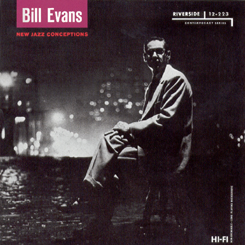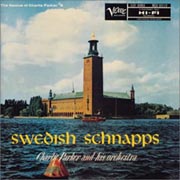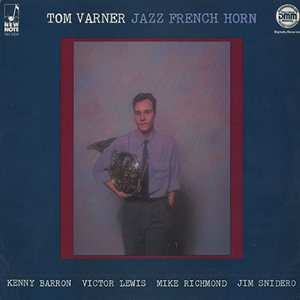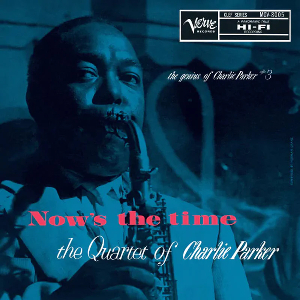
New Jazz Conceptions is the debut album by jazz musician Bill Evans, released in 1957 on Riverside Records.

Ella Fitzgerald Sings the Cole Porter Song Book is a 1956 studio double album by American jazz singer Ella Fitzgerald, accompanied by a studio orchestra conducted and arranged by Buddy Bregman, focusing on the songs of Cole Porter.
Teddy Kotick was an American jazz bassist, who appeared as a sideman with many of the leading figures of the 1940s and 1950s, including Charlie Parker, Buddy Rich, Artie Shaw, Horace Silver, Phil Woods and Bill Evans.

This is a list of recordings by American jazz alto saxophonist Charlie Parker ("Bird"). Parker primarily recorded for three labels: Savoy, Dial, and Verve. His work with these labels has been chronicled in box sets. Charlie Parker's Savoy and Dial Sessions have been issued on The Complete Savoy Sessions, Charlie Parker on Dial and Complete Charlie Parker on Dial and The Complete Savoy & Dial Master Takes. His Verve recordings are available on Bird: The Complete Charlie Parker on Verve and The Complete Verve Master Takes.

Charlie Parker with Strings is the name of two separate albums by jazz musician Charlie Parker, released in 1950 on Mercury Records. It is also the name of a 1995 compilation album released by Verve Records, containing all the tracks from both the 1950 albums, as well as additional material. The sessions place Parker in the context of a small classical string section and a jazz rhythm section, rather than his standard bebop quintet. They were Parker's most popular sellers during his lifetime, and were admitted to the Grammy Hall of Fame in 1988.

Iron Man is an album by American jazz multi-instrumentalist Eric Dolphy, recorded in 1963 and released by the Douglas International label in 1968. The album was reissued on disc two of Musical Prophet: The Expanded 1963 New York Studio Sessions, released in 2018 by Resonance Records.

Art Pepper Today is a 1978 jazz album by saxophonist Art Pepper, playing with pianist Stanley Cowell, bassist Cecil McBee, drummer Roy Haynes and percussionist Kenneth Nash.

Bird: The Complete Charlie Parker on Verve is a 1990 box-set by jazz musician Charlie Parker. It features every extant note Parker recorded for labels controlled by Norman Granz as well as his appearances at Jazz at the Philharmonic. Parker recorded for Granz primarily in the last five years of his life, a period during which, besides playing with his famous quintet, he experimented with strings, Afro-Cuban jazz and mixed chorus. Among the albums produced during Parker’s Verve years were Bird & Diz, Charlie Parker with Strings, and Swedish Schnapps.

Far Cry is the third album by jazz musician Eric Dolphy, released in 1962 on New Jazz Featuring a quintet co-led with trumpeter Booker Little, it is one of the few recordings of their partnership. Pianist Jaki Byard, bassist Ron Carter and drummer Roy Haynes all return from earlier Dolphy albums. This was a busy time for Dolphy- he took part in Ornette Coleman's Free Jazz session and recorded this album on the same day, and had participated in the Jazz Abstractions project the previous day.

Johnny Mathis is the first studio album by vocalist Johnny Mathis that was released by Columbia Records in 1956. The subtitle A New Sound in Popular Song can be found on the back cover but not on the front of the album or the disc label; in fact, this Mathis LP has been referred to as "the jazz album".

Swedish Schnapps(The Genius of Charlie Parker, volume 8) is a Charlie Parker studio album, released by Verve Records, compiling recordings made by two different groups, on two different dates in 1951. The tracks had previously been released as 78rpm singles, and the master takes had previously appeared on the 1955 Clef Records LP The Magnificent Charlie Parker.

The Jazz Experiments of Charlie Mingus is an album by jazz bassist and composer Charles Mingus released on the Bethlehem label. The album contains tracks originally released by Period Records as two 10-inch LPs entitled Jazzical Moods and co-credited to John LaPorta.

Jazz French Horn is the third album by American jazz French horn player and composer Tom Varner recorded in 1985 and released as an LP on the New Note label, and later as a CD on the Italian Soul Note label.

The Young Bloods is an album by trumpeter Donald Byrd and saxophonist Phil Woods recorded in 1956 and released on the Prestige label.

Sugan is an album by saxophonist Phil Woods with pianist Red Garland recorded in 1957 and originally released on the Status label, a subsidiary of Prestige Records.

The Complete RCA Victor Recordings is a 1995 compilation 2-CD set of sessions led by Jazz trumpeter and composer Dizzy Gillespie recorded for the RCA Victor label between 1937 and 1949.

The Complete Roost Recordings is a 1997 compilation 3-CD set of sessions led by saxophonist and bandleader Stan Getz recorded for the Roost Records label between 1950 and 1954. The compilation includes material previously released on Getz's Roost LPs The Sound, The Getz Age, the two volumes of Stan Getz at Storyville and the album with guitarist Johnny Smith - Moonlight in Vermont along with alternate takes and previously unreleased performances.

South of the Border is a studio album by jazz saxophonist Charlie Parker, first released in 1952 for Mercury Records as a 10" LP. An expanded release was made on CD by Verve Records in 1995, and all tracks were included on Verve's box set Bird: The Complete Charlie Parker on Verve.

Live at Rockland Palace, also released as The Complete Legendary Rockland Palace Concert, is a live album by jazz saxophonist Charlie Parker, recorded in 1952 with strings at Rockland Palace in Harlem. The event was a benefit concert for local politician Benjamin Davis.

Now's the Time: the Quartet of Charlie Parker, also released as The Genius of Charlie Parker, Vol. 3, is a studio album by alto saxophonist Charlie Parker (Bird) and his quartet. It was recorded in 1952 and 1953 and released posthumously in 1956 by Verve.



















